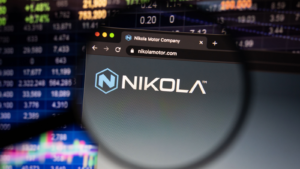The three hidden-gem penny stocks I’ve outlined in this article are all strong buys, considering their fundamentals and prospects for further capital appreciation for investors. But as always, it’s important to remember that penny stocks are highly risky investments and for people with high tolerances.
So here are three penny stocks for investors to consider.
Bitfarms (BITF)

Bitfarms (NASDAQ:BITF) is one of the hidden-gem penny stocks on which I’m the most bullish. It’s a Bitcoin (BTC-USD) miner poised to strengthen due to the upcoming Bitcoin halving event in April. There is also a potential Ethereum (ETH-USD) spot ETF approval sometime later this year.
The company is preparing for the Bitcoin halving event with strategic investments to reduce costs. The company plans to upgrade its fleet to support a target hash rate of 17 EH/s in the second half of 2024 and is aiming for a significant increase in operational capacity to 391 MW €‹.
BTF held 804 BTC in treasury, valued at approximately $34.6 million, and maintained a healthy balance sheet. A key reason why I’m bullish on BITF stock is that if Bitcoin rallies, then it could become undervalued on a price-to-book basis, which could garner further interest from investors.
Analysts have given Bitfarms a “Buy” consensus rating, with price targets ranging from $3.00 to $5.00, indicating a potential upside.
Nikola (NKLA)

Nikola (NASDAQ:NKLA) is another one of those hidden-gem penny stocks that investors should follow closely. The company focuses on zero-emission transportation and infrastructure products.
For this year, Nikola plans to continue its push into the zero-emissions vehicle market, with particular emphasis on delivering more of its hydrogen fuel cell electric trucks. Although the company has been struggling with a significant net loss last quarter, it managed to triple its unrestricted cash through a $250M raise and has enough runway to continue its development.
Its financial position at present is stable. NKLA’s debt-to-equity ratio stands at 0.38, with a current ratio of 1.61, indicating a reasonable balance between its liabilities and assets. Price targets range from $1 to $5 for the stock, which is valued at just $0.68.
I think that the future of battery-electric and hydrogen fuel cell electric vehicles is a promising one, and NKLA’s plans to increase its truck deliveries and continue building its hydrogen fueling infrastructure could prove to be accretive for investors.
Clover Health Investments (CLOV)

Clover Health Investments (NASDAQ:CLOV), a healthcare technology company, focuses on improving health outcomes and reducing costs through its software platform.
I think that CLOV could be a winner this year. To illustrate this, the company is targeting Adjusted EBITDA profitability. The company plans to achieve this by improving its Medicare Advantage plan performance and reducing operational spending.
Other reasons CLOV Is a buy are its low market cap of approximately $492.52 million and its price-to-sales ratio of 0.14 times sales. This means CLOV is in a prime position to surge higher if it manages to meet its adjusted EBITDA target. The low valuation also means there’s plenty of room for its share price to appreciate without being unreasonably speculative.
Case in point: Analysts have issued 12-month target prices for CLOV’s stock price ranging from $1.25 to $3.00, which means it could potentially increase by over 100% as the best bull scenario.
On Penny Stocks and Low-Volume Stocks: With only the rarest exceptions, InvestorPlace does not publish commentary about companies with a market cap of less than $100 million or trade less than 100,000 shares daily. These “penny stocks” are frequently the playground for scam artists and market manipulators. If we ever publish commentary on a low-volume stock that may be affected by our commentary, we demand that InvestorPlace.com’s writers disclose this fact and warn readers of the risks.
Read More: Penny Stocks — How to Profit Without Getting Scammed
On the date of publication, Matthew Farley did not have (either directly or indirectly) any positions in the securities mentioned in this article. The opinions expressed are those of the writer, subject to the InvestorPlace.com Publishing Guidelines.
Matthew started writing coverage of the financial markets during the crypto boom of 2017 and was also a team member of several fintech startups. He then started writing about Australian and U.S. equities for various publications. His work has appeared in MarketBeat, FXStreet, Cryptoslate, Seeking Alpha, and the New Scientist magazine, among others.
